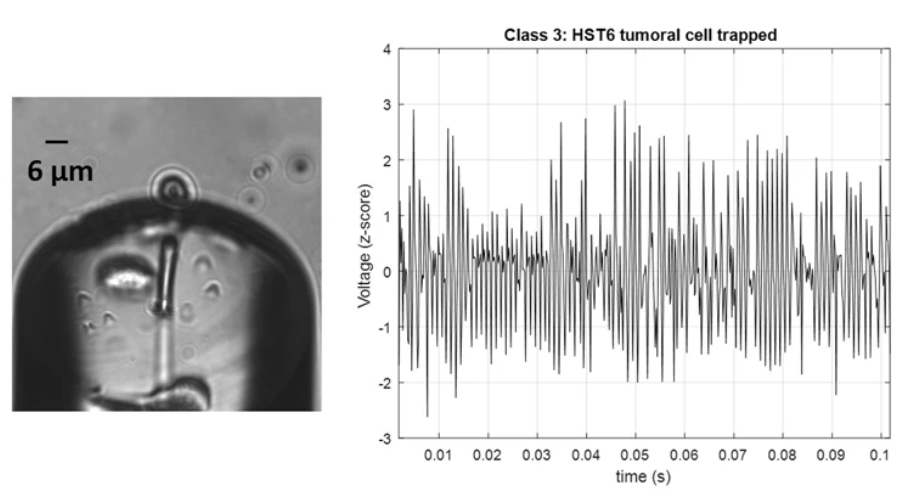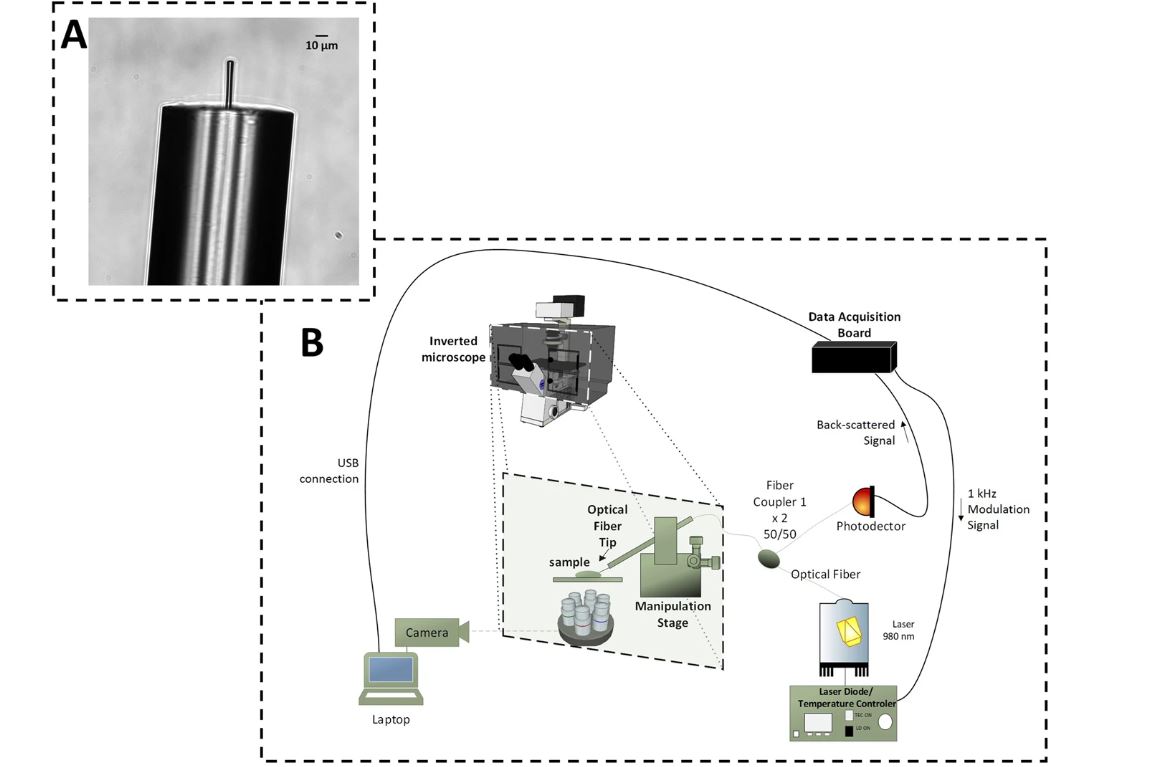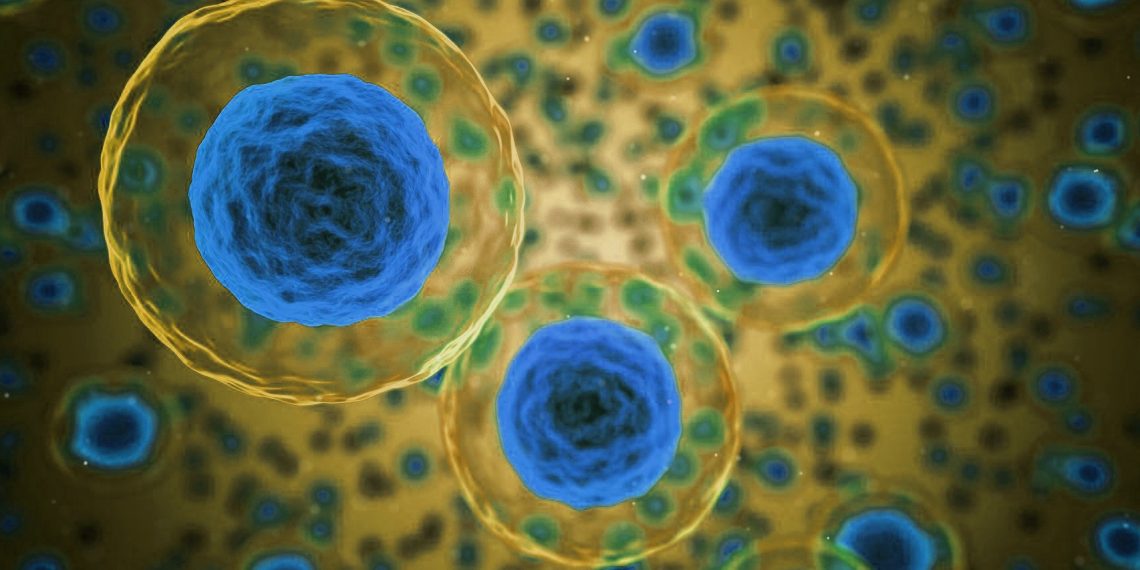The article “iLoF: An intelligent Lab on Fiber Approach for Human Cancer Single-Cell Type Identification” was published in Scientific Reports, a free access scientific publication from Nature. The article proposes the use of an intelligent system based on fibre optics (iLoF) for the immobilisation, isolation and identification of tumour cells.
The iLoF system acts as an archive for “fingerprints” of different diseases, and is currently being developed to enable the rapid and low-invasive testing of diseases such as Alzheimer’s, strokes, Parkinson’s or cancer. This system – created by INESC TEC’s C-BER and CAP research centres and the iLoF spin-off, and validated in partnership with researchers from i3S (Institute for Research and Innovation in Health) – combines A.I. algorithms with photonics-based signals to identify unique categories of biomarkers i.e. indicators of the presence of diseases.
Through their work, the researchers show that the iLoF system is able to differentiate two models of human cancer cells with the same genetic background, but with a different glycosylation profile – with an accuracy above 90% and a speed of 2.3 seconds.
“In this project, we developed an artificial intelligence method based on the analysis of laser dispersal signals from identified cells, using optical fibre tips with spherical lenses to detect human cancer cells that only differ in surface glycosylation, and are related to different metastasis profiles”, explains Joana Paiva, one of the authors of the article and INESC TEC researcher.

What is glycosylation?
Glycans are complex carbohydrate structures that register changes in cancer cases. Some tests aimed at detecting these changes are used in clinical practice for the diagnosis and prognosis of this disease. Glycosylation is also part of important biological processes in the evolution of the disease and may contribute to the stratification of different stages of development and progression of the disease, thus permitting personalised therapeutic actions.
This way, one can develop selective and simple tests based on the detection of changes in the glycosylation process, namely to identify pathological cells in complex matrices (such as blood or tissues).
“Nowadays, the detection of these changes – such as those related to the level of glycans on the surface of circulating cells – is done through expensive, time-consuming and complex tests, which resort to techniques that require advanced laboratory infrastructures. The work we published shows that the iLoF system is able to identify cells with a different glycosylation profile with an accuracy above 90%, through a simple method that, in the near future, will be use anywhere and at any time”, explains Joana Paiva.

“Results with high scientific value”
In the future, researchers envisage the incorporation of the iLoF system into an easy-to-handle device for cancer identification, mainly due to the increasing development of personalised medicine and the need to develop progressively smaller and “smarter” devices. “Said device would enable the selection of the circulating living cells, detected according to their biological characteristics. In addition, the system may represent a significant improvement in future methodologies for the detection of cancer and other diseases, based on the rapid tracking of individualised cells”, adds the researcher and current CTO of INESC TEC iLoF spin-off – intelligent Lab on Fiber.
Nature’s Scientific Reports is the 6th most important scientific publication in the Life Sciences & Earth Sciences category of Google Scholar, with an h-index of 176 (the h index represents the number of articles with citations greater than/equal to said number). It is also the #23 magazine with the most impact worldwide, according to Google Scholar; in this sense, “the publication of the article in this magazine leads to a major scientific impact”, underlines Joana Paiva.

The article was written by Joana Paiva (INESC TEC/Faculty of Engineering-FEUP/Faculty of Sciences-FCUP of the University of Porto); Pedro Jorge (INESC TEC/FCUP); Rita Ribeiro (INESC TEC/4DCell), Meritxell Balmaña (i3s/IPATIMUP – Institute of Molecular Pathology and Immunology of the University of Porto/IMBA – Institute of Molecular Biotechnology of the Austrian Academy of Sciences); Diana Campos (i3s/IPATIMUP), Stefan Mereiter (I3S, IPATIMUP, IMBA); Chunsheng Jin (Department of Medical Biochemistry and Cell Biology, Institute of Biomedicine, Sahlgrenska Academy, University of Gothenburg); Niclas G. Karlsson (Department of Medical Biochemistry and Cell Biology, Institute of Biomedicine, Sahlgrenska Academy, University of Gothenburg); Paula Sampaio (i3S/IBMC. Institute for Molecular and Cell Biology); Celso A. Reis (i3S/IPATIMUP/ Abel Salazar Institute of Biomedical Sciences/Faculty of Medicine, University of Porto); and João Paulo Cunha (INESC TEC/FEUP).
ILoF is a start-up created at INESC TEC and headquartered at the Faculty of Medicine of the University of Porto (FMUP).
Click here for Nature’s Scientific Reports article.
The researchers mentioned in this news piece are associated with INESC TEC, UP-FCUP and UP-FEUP.




 News, current topics, curiosities and so much more about INESC TEC and its community!
News, current topics, curiosities and so much more about INESC TEC and its community!